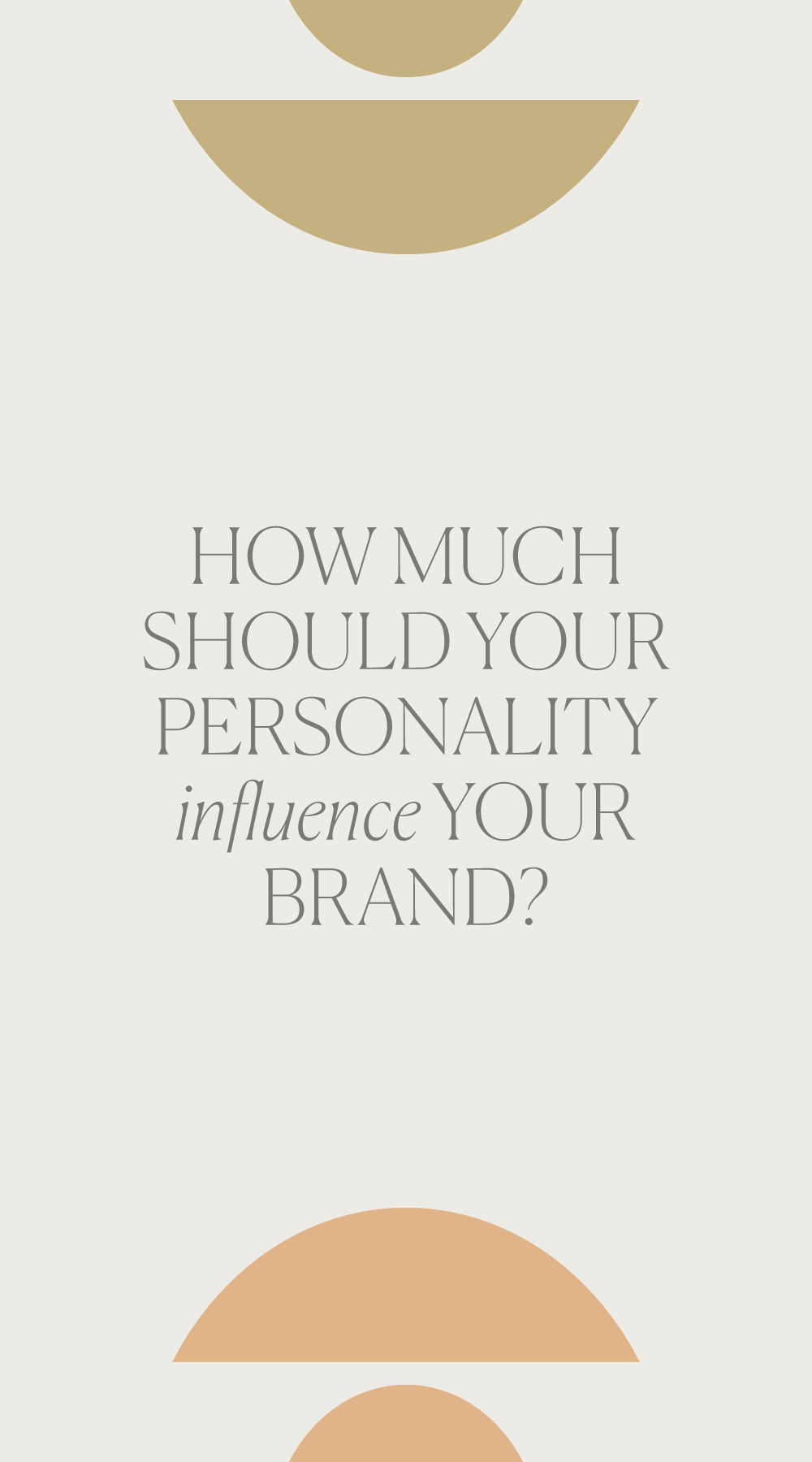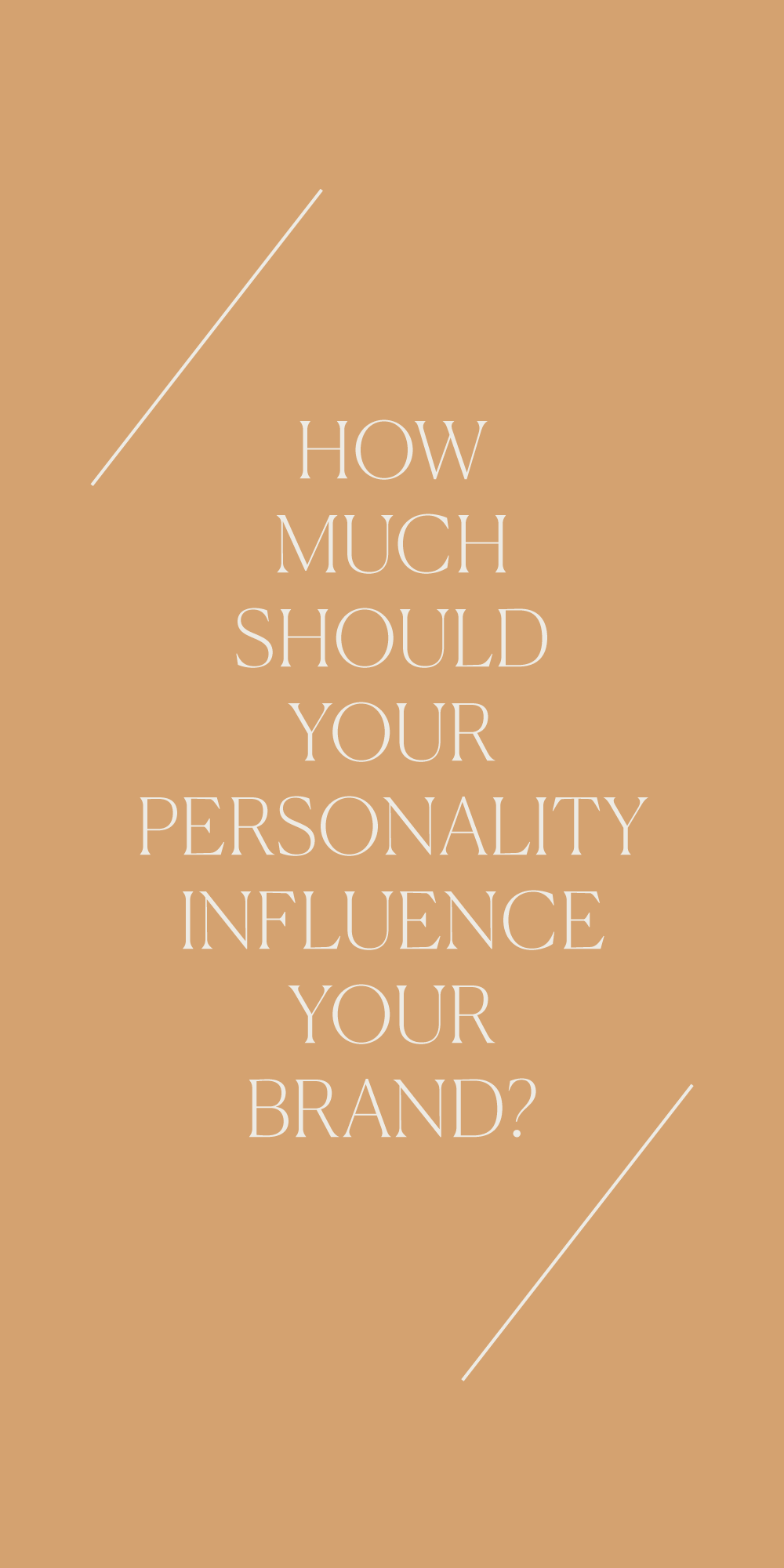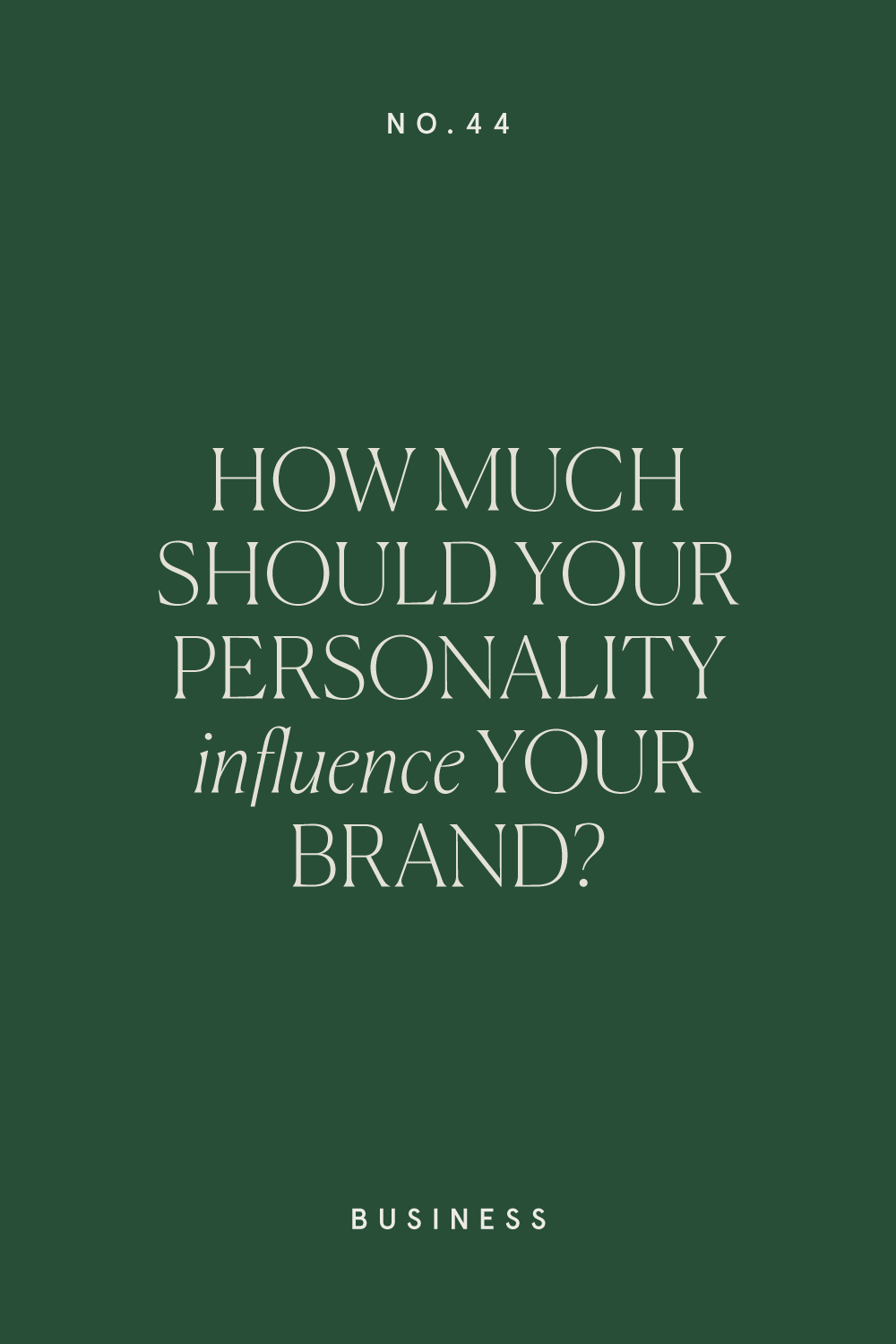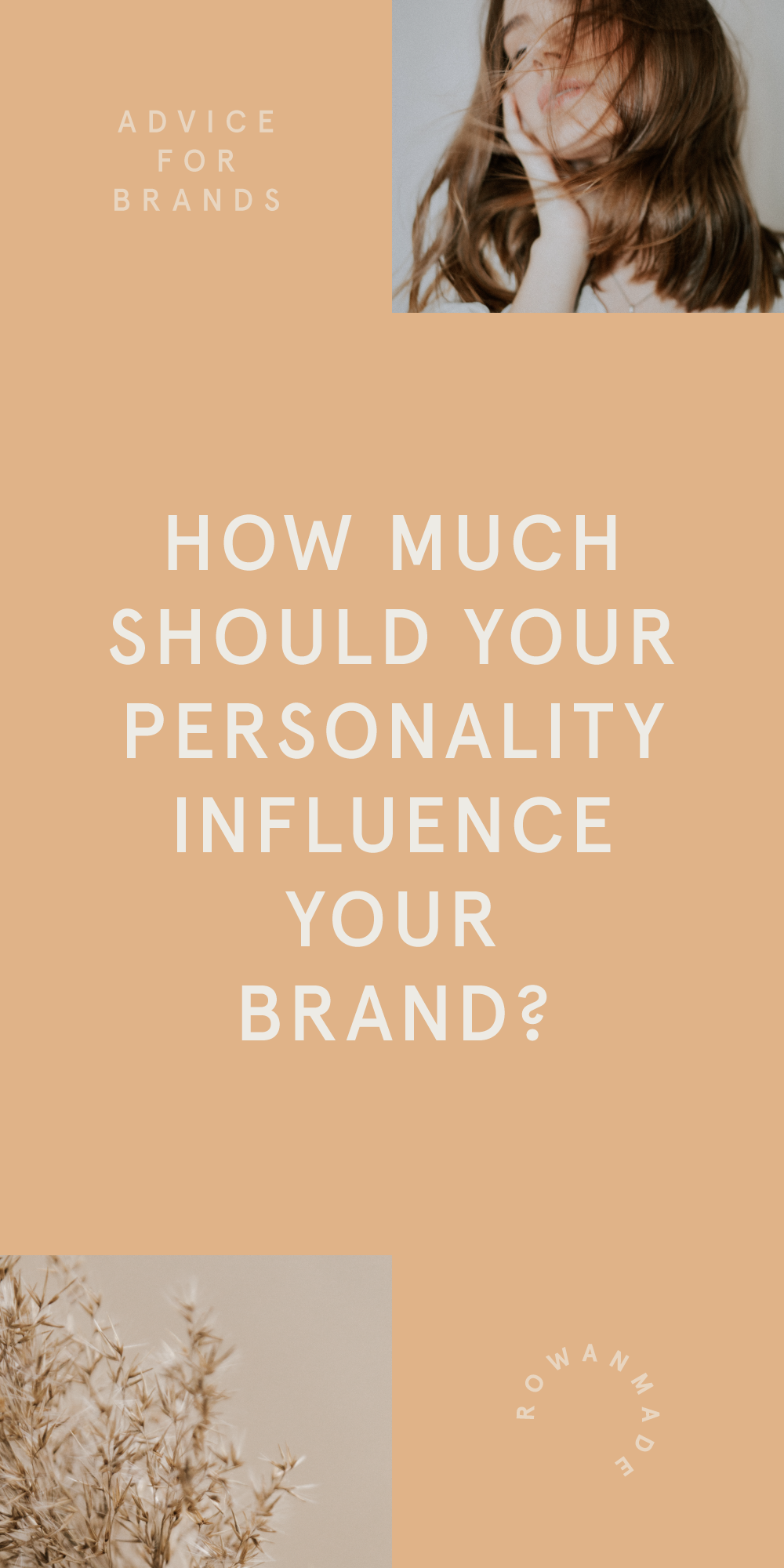You Are Not Always Your Own Brand
As a brand designer, one of the HARDEST things I’ve had to explain is the simple fact that us humans are not always our own brand. Sure, we may own a business. And yeah, we should probably like or approve of our own branding. But that doesn’t mean that our brand needs to be a direct reflection of the imagery we’re liking on Pinterest or Instagram at any given moment.
Why? Because a brand is more than ourselves, aiming to serve and attract a specific audience. Now, this isn’t as cut and dry as I’m making it out to be, so let’s dig a little bit deeper.
When it comes to the correlation between branding and how much of a person’s personality is involved in said branding, there’s a spectrum.
Take celebrities, for example. Their audience is following their journey because they enjoy or resonate with whatever that person is doing, whether it’s acting, singing, writing, cracking jokes, etc. And because these celebrities are often the face of their own brand, it makes sense that more of their personality and preferences will come to the surface.
If we move down the spectrum, however, we run into brands that are a little more confusing in terms of how much personality is involved. Take Marie Forleo, Jess Lively, or Melyssa Griffin, for example. All three of these ladies use their own name as the face of their business. And yes, a lot of their personal lives and personalities come across within their own branding. But they also have products that they’re trying to sell as well as an audience they’re hoping to attract.
Because of this, there’s more of a delicate strategy to be followed, where the amount of personality involved within their branding is balanced by whatever they’re audience is in search of. For Marie Forleo, that means pairing a modern and strong aesthetic that feels trustworthy, with a voice that’s uniquely her own. Her audience, in turn, knows that they’ll always walk away feeling inspired and “cared” for by someone that feels like a friend. And it works!
This balance, however, isn’t always necessary. If we move further down the spectrum, we run into businesses that create their own identity. Think: Target, Amazon, Whole Foods, etc. They aren’t built around the personality of their founder, but rather the motive of their audience. Sure, some companies, like Apple, have a founder that shows their face every once in awhile, but they’re by no means the center of attention. Not in the least bit.
Keeping this in mind, think about where your own business would fall on the spectrum. Are you THE FACE of your company, somewhere in between, or completely behind the scenes? Based on your answer, you’ll be able to strategy and brand yourself that much better.
The reason I’m sharing all of this with you is because I’ve noticed that placing ourselves on the spectrum isn’t always the easiest thing to do. We’re so used to declaring what we do and do not like, that our personal preferences have a tendency to cloud our own judgement during the branding process. When, in reality, there’s a whole audience that needs to be carefully considered as well.
So, do yourself a favor and be honest with yourself. Because that’s where the real magic happens. ;)
PS. I launched a new class, called Branding With Bre, that's all about the branding process. And guess what? Registration is currently OPEN (until February 5th). So! If you're a designer that'd like to join us, check out all of the details right here.








